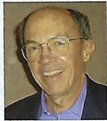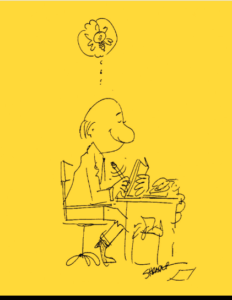 Wow! Forty years have sure passed quickly. It seems like yesterday that I walked into the Seattle office and told the receptionist I wanted to talk to somebody about coming to work for “CH2M” (our name at the time). I had moved to Seattle as a steppingstone toward reaching my goal of living and working in Alaska. The closest I could come to Alaska was a job with the Navy Facilities Engineering Command in Seattle, with responsibilities for Navy bases in Alaska. I was so bored being a federal employee, however, that I quit after only 2 months! On my way out the door, I asked a friend there who he considered the three best consulting firms in Seattle. Bob replied in his mind they were Hill and lngman, Stevens and Thompson, and a new firm that had just moved to Seattle from Oregon named CH2M HILL.
Wow! Forty years have sure passed quickly. It seems like yesterday that I walked into the Seattle office and told the receptionist I wanted to talk to somebody about coming to work for “CH2M” (our name at the time). I had moved to Seattle as a steppingstone toward reaching my goal of living and working in Alaska. The closest I could come to Alaska was a job with the Navy Facilities Engineering Command in Seattle, with responsibilities for Navy bases in Alaska. I was so bored being a federal employee, however, that I quit after only 2 months! On my way out the door, I asked a friend there who he considered the three best consulting firms in Seattle. Bob replied in his mind they were Hill and lngman, Stevens and Thompson, and a new firm that had just moved to Seattle from Oregon named CH2M HILL.
I first interviewed with Hill and lngman. I talked (emphasis on I!) with one of their senior people who spoke in a barely audible monotone and described their work “for sewer districts around Seattle.” I asked, “Do you have any international work?” That brought a long pause, followed by an incredulous “No.” “My gosh,” I thought, “this is worse than the Navy! If this is consulting engineering, I need to go back to grad school and major in journalism or something.”
Fortunately for me, I decided to interview one more firm — CH2M. And, fortunately again, in the Logan Street office in downtown Seattle, Jim Poirot was brown-bagging it and agreed to talk with me. Jim had a strategic vision of CH2M becoming a great firm with international aspirations. I couldn’t have been more impressed! Jim also made the most of my Peace Corps experience in Ecuador and Spanish language capability and was able to offer me a job at an “E2” level, not as an entry level “E1.” The firm made me an offer ($1,100 per month), which I enthusiastically accepted. Jim Poirot was the first of many mentors I was privileged to have, including in later years Harlan Moyer, Clair Hill, and Archie Rice.
As I recall those first years with the firm, I subconsciously had sorted out my potential place in the firm. Gene Suhr, another mentor and key supporter later in our fledgling San Francisco (SFO) office, kidded me for being “One of those engineers who ‘couldn’t design an outhouse without a seating plan!’ ” And that was true. I always enjoyed the study phase of projects more than the detailed design phase, plus the firm had many top designers. So, as I looked around at my peer group in the firm, I began to migrate toward the “people side” of our business — whether doing study work, business development, or interviewing for projects — where my more natural interests lay.
I met my future wife in Seattle, Dani Davis; and we married in July of 1967. She was a vivacious and fun companion, who enjoyed the contacts with the other spouses in the firm. For months after we married, our lead draftsman in Seattle, Oscar Frial, always asked me at coffee breaks whether Dani was still fixing my breakfast in the morning. “Of course.” I would respond. “Is it a hot breakfast?” Oscar would ask. Again, my reply “Of course.” “Well,” he said, “let me tell you what is going to happen. Pretty soon it will be less and less breakfast. Then it will be cereal left on the table the night before. And finally, it will be yelling at you from the bedroom because you are making too much noise fixing your own breakfast!” Oh Oscar, how right you were!
Late in 1970, I became part of the team that opened the San Francisco office, along with Wayne Phillips, Harry Teel, and Bill O’Leary. This almost coincided with the merger of CH2M with Clair A. Hill and Associates(CAHA).
Our office was an important joint effort of the two firms. And this was in the days when the Redding group of CAHA appeared at the Bend softball tournaments with shirts reading ch2m/HILL! There was plenty of rivalry, but mostly of the good-natured sort, at least at a working level.
In SFO, we had moved into one of the most highly competitive consulting engineering markets in the country; and we were not welcomed by our competitors. At the monthly meetings of the Bay Section of the California Water Pollution Control Association, we were routinely booed when we introduced ourselves. As you might imagine, that just strengthened our resolve to succeed in that market. And succeed we did! In our darkest times in SFO, the entire office of about 12 total staff was working on one $100,000 study for the Corps of Engineers. At about that time, we were selected for our first major project by the City and County of San Francisco — the pilot plant to select the process for the City’s Southeast Water Pollution Control Plant.
The rest, you might say, is history. We became the dominant water-wastewater firm in the Bay Area. What was the secret to our success? It occurred only through the steadfast and self-sacrificing support of great people from Corvallis and Redding. Without their help we had nothing to sell.
Let’s fast forward now to 1987, when Dani and I accepted the firm’s offer to move to Denver to replace the retiring Bob Pailthorp in the position of Central District manager. (At this point in my memory, events move with almost blurring speed!) Ralph Peterson, Lyle Hassebroek, and I moved into the CEO, INC President, and Chairman roles, respectively, over a period of about 2 years.
For several years, I was in Washington, D.C., almost weekly from Tuesday through Thursday, working Capitol Hill with Dick Corrigan, another “legend” in my view. With Dick, I learned so much of the practical side of “political science.”
Two other major events or changes come to mind in my years as Chairman: improving diversity on the Board and in the firm’s workforce, and re-engineering the firm.
On the first point, during my “DC time,” I had the good fortune to become close to Secretary of Commerce Ron Brown. Ron believed and taught me that unlike all of our global business competitors, the U.S. had an important competitive advantage in the diversity of our population and workforce. We were comfortable working with different people who not only looked different but who had differing beliefs and work habits. The logical conclusion was that if CH2M HILL aspired to be a global player, we too had to increase the diversity of our workforce; and indeed that has proven to be the case.
Re-engineering was also a landmark process. The firm’s top line growth had leveled off for some time, when we retained a management consultant to take a look at what we might do. After a fairly cursory analysis, she concluded we either could “Make fundamental changes or go out of business!” Our response: we fired the consultant! But it wasn’t long before we realized she had been exactly right. We were seen by some of our clients as arrogant, and we had a matrix organization and growing overhead rate that was slowly pricing us out of business.
So we made fundamental changes. We consolidated dozens of regional operations to five. We flipped the matrix 90 degrees to give global business groups primary global authority. And these changes have served us very well.
So here we are in 2007, a $4+ billion organization of more than 18,000 employees deployed around the world. We are doing benchmark projects like the world class tunnels and underground treatment plant in Singapore; the program management on the facilities for the 2012 Olympics in London; emergency ocean desalting for a water supply in Brisbane, Australia; and we are proposing to lead a team to widen the Panama Canal! It is amazing to comprehend!
 What has been the key to our success? I believe it is the bedrock principles of our “founders and other legends” as I like to call them. We must engrave Jim Howland’s Little Yellow Book in stone.
What has been the key to our success? I believe it is the bedrock principles of our “founders and other legends” as I like to call them. We must engrave Jim Howland’s Little Yellow Book in stone.
About 8 years ago, my wife became chronically ill; and it became necessary to cut back on my work hours and travel. I’ve been working part-time on water resources projects in Colorado and in the seven states served by the Colorado River for the past 3 years. Full retirement is around the corner somewhere, probably this year.
In reflecting back over my career and my life, I can’t thank the good Lord enough for what a privilege it has been to work with all of you, and to be part of such a great organization built upon bedrock principles that are of timeless relevance and value. And perhaps most importantly, it has been great fun! Adios!
– Phil
